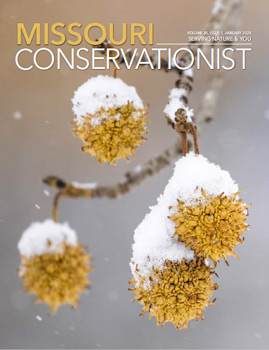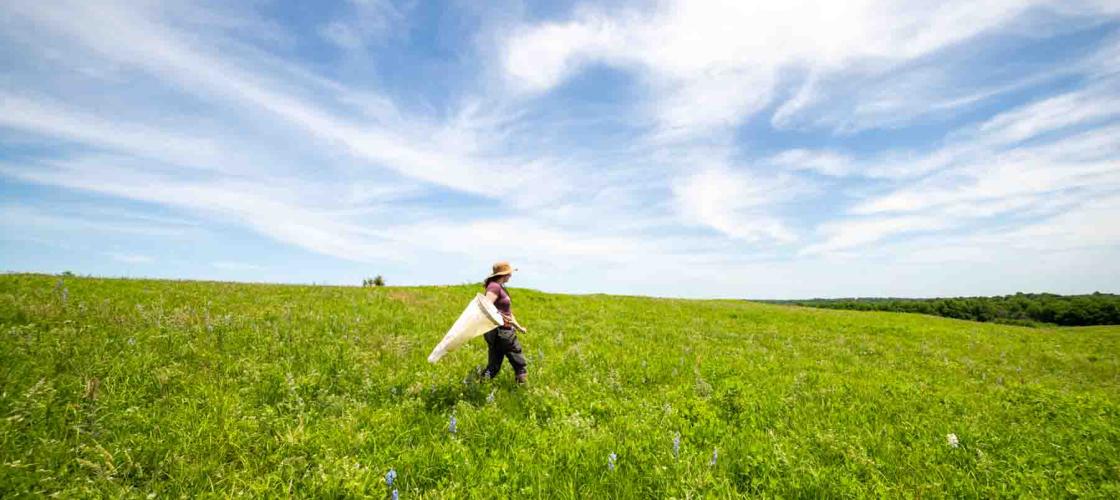
(July 1, 2022 – June 30, 2023)
As the ninth director in MDC’s 86-year history, I often think of my predecessors and try to envision the conservation landscape that each one faced. Sometimes in observing the complexities of conservation today — climate change, species and habitat loss, new wildlife diseases, societal disconnect from nature, among others — I long for a simpler time, a narrower focus if you will. Most often then I think of I.T. Bode, MDC’s first director. His charge, in retrospect, seemed clear — bring back the game species that had been lost to the challenges of his time, namely market hunting, meager law enforcement, and political constraints. But I know his task was no simpler, as his charge also included standing up an agency born out of a constitutional referendum and public directive. And over time, each director, and the commissions that provided oversight and strategic direction, have lived their own journey of shepherding efforts to move conservation forward amid the challenges and opportunities of their day.
As we do each year, in this our January issue, we highlight some of the work the department is currently undertaking to carry out the mission — namely to take care of nature, connect people with nature, and maintain the public trust. And just as my predecessors knew, I know the success of our journey is only possible with a skilled and passionate staff, robust partnerships, and an engaged and supportive public. I imagine they believed what I know today — that our mission has never been more important.
—Sara Parker Pauley, director
State of Missouri Operating Budget
Total State of Missouri operating budget for fiscal year 2023: $51,846,462,544
MDC represents less than 1 percent of the total state budget and receives no state general revenue.
MDC FY 23 Actual Receipts
MDC gets the majority of its funding through the conservation sales tax. For every $8 spent on taxable items, one penny goes to conservation.
- Conservation Sales Tax: $163,663,924
- Federal Reimbursements: $45,456,241
- Permit Sales: $41,798,597
- Sales and Rentals: $9,039,743
- Other Sources: $3,114,864
- Interest: $2,875,260
MDC FY 23 Actual Disbursements
Funds are distributed throughout MDC to accomplish the state's top conservation priorities.
- Conservation Business Services: $54,715,118
- Habitat Management: $53,170,617
- Fish and Wildlife Management: $51,771,013
- Education and Communication: $30,017,688
- Recreation Management: $23,189,891
- Capital Improvements: $19,622,033
- Land Conservation and Partnerships: $11,836,252
- Staff Development and Benefits: $10,655,806
- County Assistance Payments: $3,075,259
NOTE: Disbursements include all operating, other agency, and capital improvements from the Conservation Commission Fund. Other agency disbursements are appropriated outside the Department of Conservation operating budget. Fuel, benefits, and other disbursements were allocated to the appropriate branches.
Source: Missouri Office of Administration
MDC Takes Care of Nature
MDC Fish Hatcheries
MDC fish hatcheries include five coldwater facilities (Bennett Spring, Maramec Spring, Montauk, Roaring River, and Shepherd of the Hills) and four warmwater facilities (Blind Pony, Chesapeake, Hunnewell, and Lost Valley). Most of these hatcheries were built 60 to 100 years ago and have aging infrastructure. There are numerous repair and renovation projects scheduled for the next several years at these facilities to improve production capabilities, increase staff safety, and ensure the health of the fish being raised. Hatchery renovations will protect the resources that provide fish to waterbodies for years to come. A major renovation project was recently completed at Roaring River to increase water intake efficiency while removing harmful debris. A Bennett Spring renovation project is currently under contract.
Bennett Spring Hatchery has been rearing trout for nearly 100 years, with most of the production infrastructure being built in the 1960s. The current renovation project will incorporate new technologies that will improve fish production and repair or replace sections of the hatchery that either are no longer functioning or functioning poorly due to age. This project will also improve staff safety during all seasons and weather events. Completion of this project will take some time; however, the park will still maintain nightly stockings during the catch-and-keep seasons.
Annually, MDC fish hatcheries contribute nearly 5 million fish of various species to lakes, ponds, and streams throughout the state. Fish raised at the nine hatcheries enhance and diversify fishing opportunities, provide specialty sportfishing opportunities, sustain fish populations through supplemental stockings, and provide positive economic impacts. Improving these facilities through repair and renovation projects will ensure future fishing opportunities for everyone to enjoy.
State Record Fish Program
Missouri is blessed with many lakes and streams that are managed to provide world-class angling opportunities. MDC developed the State Record Fish Program to recognize anglers who have caught the largest recorded fish from a list of recognized species found in Missouri waters.
State record fish caught in FY 23
Blue sucker
- Angler: Travis Uebinger, Auxvasse
- Date: Jan. 15, 2023
- Weight: 11 lbs., 5 oz.
- Caught from: Osage River
- Method: Pole and line
- Previous record: 9 lbs., 14 oz., Missouri River, April 12, 1997
Brown bullhead
- Angler: Mitchell L. Dering
- Date: March 14, 2023
- Weight: 4 lbs.
- Caught from: Duck Creek CA
- Method: Bow
- Previous record: 2 lbs., 7 oz., Wappapello Lake, May 8, 1994
This also beats the current bowfishing world record.
Flier
- Angler: Tyler Goodale, Doniphan
- Date: March 26, 2023
- Weight: 11 oz.
- Caught from: Duck Creek CA
- Method: Pole and line
- Previous record: 10 oz., private pond, March 15, 1991
Longear sunfish
- Angler: John F. Goad
- Date: May 8, 2023
- Weight: 5 oz. (Ties current state record)
- Caught from: Frieda Lake in Crawford County
- Method: Throwline
- Previous record: 5 oz., Wappapello Lake, May 8, 1994
George O. White State Forest Nursery Provides Outstanding Customer Service
The George O. White State Forest Nursery continues to provide superior customer service as reported in an ongoing customer satisfaction survey. Missourians reported being extremely satisfied with the ease of the online ordering system, value for price, and overall experience.
The nursery’s commitment to providing high-quality seedlings resulted in over 2 million trees distributed to over 13,300 customers in FY 23.
Over 80,000 bald cypress seedling trees were distributed to Missouri fourth grade students for Arbor Day. As part of this effort, teachers were encouraged to talk about the importance of trees in our lives.
Feral Hog Elimination
During 2022, the Missouri Feral Hog Elimination Partnership removed a total of 6,289 feral hogs from Missouri’s landscape. The highest number of feral hogs was removed from Iron County at 893 hogs, followed by Shannon County at 759 hogs, and Wayne County at 692 hogs. The partnership conducted 305 hours of aerial elimination efforts in 2022, resulting in the removal of 1,612 feral hogs. Staff used systematic baiting to determine hog presence on 3.7 million acres. Staff also assisted 709 private landowners. Anecdotal field reports from trappers indicate fewer feral hogs and smaller sounder sizes, suggesting that elimination efforts have been successful.
At full staff, a total of 48 full-time trappers are deployed across the state. Four feral hog outreach specialists were hired as part of the University of Missouri’s Extension Program to act as partnership liaisons. Outreach specialists work in counties affected by feral hogs. They are stationed in Ironton, Ava, Salem, and Poplar Bluff. The outreach specialists establish relationships with landowners in strategic locations, publish a quarterly newsletter, engage local organizations (county Farm Bureaus, local Cattleman’s Associations, county commissions, soil and water conservation districts, etc.), conduct surveys, and collect data associated with feral hog damage, connect landowners with trappers, and organize landowner meetings and workshops.
Since 2022, the outreach specialists assisted in signing up 66,778 acres of private land for aerial operations.
The partnership is made up of agencies and organizations that are committed to total elimination of feral hogs from Missouri’s landscape. In 2020, the partnership established a unified incident command system to manage feral hog elimination efforts in the state. Since 2016, the partnership has eliminated feral hogs from 279 watersheds in the state. These watersheds encompass approximately 6.9 million acres of land, a decrease of 61 percent of the land previously occupied by feral hogs in Missouri.
Schell-Osage Conservation Area Wetland Renovation
MDC held a groundbreaking ceremony April 24 for a $6.4 million pump station project at Schell-Osage Conservation Area (CA) in northeastern Vernon County. This is the first phase of three in a long-planned wetland and lake renovation. The project will improve the area’s wetlands for a wide variety of waterfowl, shorebirds, and wading birds, and it will improve Schell Lake for fishing. These changes will enhance opportunities for waterfowl hunters, birders, wildlife watchers, and anglers.
Schell-Osage CA was developed along the Osage River and is one of MDC’s oldest wetland and upland conservation areas. Much has changed since wetland development began in 1962, and wetland pools were opened to managed waterfowl hunting in 1964. Schell-Osage CA lowlands are now in the upper end of Truman Lake. Extreme weather and highwater levels within Truman Lake have caused repetitive and expensive flood damage to area levees. Not all the change has been negative, though, because being adjacent to Truman Lake provides access to a much larger water source than when the area was first developed.
The permanent concrete pump station will draw water from the Osage River arm of Truman Lake. This source replaces water from Schell and Atkinson lakes as well as portable pumps in Truman Lake, which were less efficient, safe, and reliable. The pump station will give area managers better control to fill wetland pools during autumn and spring waterfowl migrations, and it will reduce water level fluctuations in Schell and Atkinson lakes.
In coming phases, a redesign and rebuild of wetland levees will be at angles more in line with natural hydrology. They will use natural high points as anchors and be built with natural contours less prone to damage from flowing floodwater. The number of waterfowl hunting positions will be retained, and the new concrete hunting blinds will be built into mounds that will blend better into the landscape and can also function as habitat for wildlife.
Schell Lake will be renovated. The project will create more water depth diversity to enhance fishery habitat. An improved boat ramp and new jetties around the perimeter will increase access for anglers.
The Schell-Osage CA project is the final one in MDC’s Golden Anniversary Wetlands Initiative to improve the state’s five oldest wetland management areas. Other conservation areas improved include Fountain Grove, Duck Creek, Montrose, and Ted Shanks conservation areas. Renovations at Schell-Osage CA are moving forward with help from a $1 million match grant from the federal North American Wetlands Conservation Act. MDC and Ducks Unlimited are using the grant to match the $3.5 million that has been dedicated from a diverse group of conservation partners to make the area better for waterfowl, wildlife watchers, hunters, and anglers.
2023 Missouri Wetlands Summit
The first Missouri Wetlands Summit, co-hosted by MDC and the Conservation Federation of Missouri, was held Feb. 1–3 at The Lodge of the Four Seasons at Lake Ozark. The objective for the summit was to increase participants’ knowledge of wetlands, build relationships, and continue building partnerships to advance wetland conservation for a diverse fish and wildlife resource. This summit was for state and federal agency staff, public and private wetland researchers, engineers, managers, not-for-profit and non-governmental organizations, hunters, birders, and any conservationist interested in helping shape the future of wetland conservation in Missouri. Over 330 attendees from 15 states heard presentations and discussions from a wide variety of experts, professionals, and other interested parties on the state of wetland conservation in Missouri.
A Missouri Grasslands Summit is being planned for April 2024 with the same objective as the wetlands summit.
Missouri Comprehensive Conservation Strategy
During this past year, 19 regional Comprehensive Conservation Strategy (CCS) trainings were provided to over 350 managers, technicians, and supervisors. This in-person training helps MDC staff prioritize budgets and staff time for habitat work and planning. These trainings also give staff the opportunity to provide feedback on the CCS.
Through the past year, partners have continued to engage in promoting and implementing the CCS through focused resource investment, including communications, financial contributions, and the use of habitat strike teams. This has primarily included other state and federal agencies and nongovernmental organizations.
Missouri now has 10 priority geographies (PGs), adding Hi Lonesome to the list this year. Within each of the 10 PGs, dedicated interdisciplinary teams continue to work with partner organizations and private landowners to implement landscape scale conservation. Hi Lonesome, located a few miles south of Sedalia, is within the eastern half of the Cole Camp Prairies conservation opportunity area. This PG contains many critically imperiled remnent prairies. Looking ahead to FY 24, the PG teams will work with habitat systems managers and other experts to develop strategic measurable desired future conditions for each geography. This effort will assist PG teams and partners in determining where and what types of activities to focus on to improve the habitat quality.
Missouri Natural Areas System and Natural Community Management Evaluation
Missouri continues to manage a strong natural areas program under the guidance of the Missouri Natural Areas Committee (MoNAC). This year, MoNAC approved the expansion of the Niangua River Hills Natural Area at Lead Mine CA, resulting from ongoing natural community restoration from MDC staff and partnership work from The Nature Conservancy. This area is a crown jewel of woodland and glade restoration in this Upper Niangua River conservation opportunity area.
MDC staff organized two glade and woodland restoration workshops and a Natural Communities 101 workshop with over 90 MDC staff and partners (Missouri Department of Natural Resources — State Parks, Pioneer Forest, Mark Twain National Forest, Pheasants Forever, and Quail Forever) participating.
In cooperation with Mark Twain National Forest (MTNF), University of Missouri (MU), and MDC natural history biologists, community health index models (CHI) were completed for Ozark oak, pine-oak, and glade natural community groups. A report on ecological monitoring for the MTNF Collaborative Forest Landscape Restoration Project utilizing CHIs was expected to be out in late summer 2023.
Staff from MDC, MU, and MTNF traveled to the Hoosier National Forest in Indiana to meet with foresters, ecologists, and wildlife biologists from across U.S. Forest Service (USFS) Region 8 to develop CHIs for oak ecosystems on USFS lands in its eastern region.
Resource Management Training
The Resource Management Training Program provides learning opportunities to increase professional development for MDC employees on aquatic and terrestrial natural communities, fisheries, forestry, wildlife, and fire management. In FY 23, 1,607 MDC employees and 99 partner staff attended over 98 classes on topics such as stream management, water quality monitoring, forest soils, glade and woodland management, fire management, GIS for resource managers, implementation of our tiered approach to habitat management, working with wildlife conflicts, and many more. These trainings provide the tools to effectively manage our fish, forest, and wildlife resources. MDC also has a multidisciplinary Training and Development Working Group responsible for providing guidance and direction for continuous employee development to staff statewide.
Invasive Species
In the past year, the Invasive Species Program has been reactivated with the placement of the invasive species coordinator position and the reestablishment of the Invasive Species Working Group. The Invasive Species Program provides coordination and strategic guidance to MDC’s branches, collaboration with partners, and communications and education to the public.
The Invasive Species Working Group was formed to assemble agency specialists representing a diversity of invasive species science and management expertise. The group provides strategic guidance within MDC and addresses invasive species related needs and challenges. The group maintains a prioritized invasive species list, assesses research and monitoring needs, and develops trainings, best management practices, and strategies to improve conservation work within the agency.
The Invasive Species Program collaborates with partners — including Missouri Invasive Plant Council, Missouri Invasive Forest Pest Council, Invasive Species Strike Teams, Scenic Rivers Invasive Species Partnership, Mississippi River Basin Panel, and others — across the state and regions to promote awareness and implement effective management and conservation efforts that protect healthy land, water, and forests on public and private lands in Missouri.
Public communications and education on an array of invasive species topics were provided this year through a variety of formats and outlets, including quarterly articles in the Missouri Conservationist, presentations to volunteer groups including Master Naturalists and nature center volunteers, a live Wild Webcast, social media posts, and the annual Invasive Species Day Event at the Missouri State Fair.
Ozark and Eastern Hellbenders
Great strides have occurred with the propagation and restoration efforts for the Ozark hellbender and eastern hellbender in Missouri. MDC, the Saint Louis Zoo’s Ron and Karen Goellner Center for Hellbender Conservation, and the U.S. Fish and Wildlife Service, with support from other agencies and private citizens, work together to keep Missouri’s largest aquatic salamander from extinction. Due to drastic declines in hellbender numbers, captive propagation became a priority in the long-term recovery of the species, especially augmenting populations into their natural habitat, the Ozark aquatic ecosystem.
Continued breeding of Ozark hellbenders in artificial streams occurred at the zoo, resulting in 468 hatchling hellbenders in the autumn of 2022. Zoo-breeding of the Ozark hellbender has been successful in 11 of the past 12 years. In addition, MDC staff collected hellbender eggs from two Ozark rivers, resulting in 173 hatchlings that are being raised at the zoo. The zoo is rearing approximately 2,000 larvae and juvenile hellbenders obtained from eggs collected in the wild and eggs obtained from zoo breeding in previous years.
During the summer of 2022, 811 Ozark hellbenders and eastern hellbenders raised at the zoo were released in their native Ozark rivers. These hellbenders are being monitored to determine the success of zoo-reared hellbenders in the wild. Two historic conservation milestones were achieved in 2022. The 10,000th hellbender reared at the zoo was released into the wild, and researchers documented the first released zoo-reared individual successfully reproducing in the wild. These achievements are one step closer in conserving this unique, native salamander of the cold-water rivers of the Ozark Highlands.
CWD Management, Deer Season Regulation Changes
To adapt to the changing status of chronic wasting disease (CWD) in Missouri, MDC’s CWD Surveillance and Management Plan was revised in 2022. The original plan was developed after detecting the first case of the disease in the state in 2010, then revised in 2015. Since then, CWD has been detected in new areas of the state, and distribution of the disease has expanded in some areas where it was previously detected. Revision of the plan ensures that MDC’s surveillance and management efforts adapt to changing disease dynamics. During the plan revision, MDC solicited input from hunters and other stakeholders about the plan’s goals and objectives and about proposed changes to deer hunting regulations. The updated plan illustrates the multifaceted approach to conducting surveillance, monitoring, and management of CWD in Missouri. Main areas of focus within the plan call for enhanced disease surveillance, ensuring hunter service testing demands are met, communication, conducting applied research, monitoring disease distribution in affected areas, and applying management actions to limit further spread of the disease.
When revising the plan, MDC assessed the need for deer hunting regulation changes within the CWD Management Zone. Because deer numbers are increasing in most counties in the CWD Management Zone and deer density can affect CWD spread, additional deer harvest is needed to prevent further increases in deer numbers and help minimize the spread of CWD. Deer numbers are also increasing in most counties outside of the CWD Management Zone. To keep deer numbers at desirable levels, additional antlerless harvest is needed in these counties to help stabilize the growing population. Changes to deer hunting regulations for the 2023–2024 deer season increased hunting opportunities in the CWD Management Zone and gave hunters more opportunity to harvest antlerless deer in most counties outside of the zone. Notable regulation changes for the 2023–2024 deer season included a new early antlerless portion of firearms deer season (Oct. 6–8) in select counties, a new CWD portion of firearms deer season (Nov. 22–26) in CWD Management Zone counties, and an increase in the number of firearms antlerless permits in most counties.
K-9 Unit
Since the start of the MDC K-9 Unit in 2021, the dogs and their handlers have provided 496 programs, reaching a total of 27,211 people, and have been involved in 271 deployments. K-9 handlers are county conservation agents, with the added tool of a highly trained canine. All MDC canines are hunting breeds (Labrador retrievers and German shorthaired pointers), trained as “single purpose” dogs in illegal/hidden wildlife scent detection, article searches, and human tracking. Four new handlers/dogs were added to the team this year, bringing it to full strength at nine K-9 teams, which are evenly distributed around the state. The K-9 teams have been successful in helping find evidence from numerous poaching incidents around the state, including cases for taking turkey and deer in closed seasons, shooting from the roadway, and trespassing.
MDC Connects People with Nature
Community Assistance Program
MDC created the Community Assistance Program (CAP) in 1980 to provide close-to-home fishing opportunities in communities across Missouri. Through this program and the closely related Corporate and Agency Partnership Program, MDC enters into agreements with businesses, foundations, schools and colleges, and city, county, state, and federal agencies to provide fisheries management at existing lakes and ponds and develop facilities for anglers and boaters at lakes and streams.
The program consists of 114 CAP partners with 183 public lakes, 30 stream accesses, two lake accesses, and eight aquatic resource education ponds. MDC biologists manage 11,263 acres of CAP-enrolled lakes.
Expanded Boating Opportunities
Two popular urban conservation areas now allow carry-in, hand-launched watercraft on several area lakes. James A. Reed Memorial Wildlife Area in Lee’s Summit and August A. Busch Memorial CA in St. Charles previously prohibited personal canoes and kayaks. Responding to public feedback, a regulation change went into effect Feb. 28 that would allow visitors to bring their own canoes and kayaks for use on certain area lakes. Busch CA requires a no-cost daily boating tag to be able to use your canoe or kayak from April 1 through Sept. 30. These tags are available at the onsite concessioner, All In Bait Tackle Shop, and are available on a first-come, first-served basis. No tag is required at James A. Reed Memorial Wildlife Area.
Green Schoolyard Program
St. Louis Public Schools have partnered with MDC, The Nature Conservancy, and other local stakeholders to convert the current blacktop schoolyard at Froebel Literacy Academy to a green space with park-like features for recreation and STEAM (science, technology, engineering, arts, and math) learning. This project, relying on a grant from the Metropolitan St. Louis Sewer District, was approved by the Board of Education of the City of St. Louis and will be the first-ever green schoolyard in the state.
Green spaces improve students’ well-being (see graphic below) while contributing to the ecological health and resilience of St. Louis. The new schoolyard will divert stormwater runoff from entering the sewer system and manage stormwater in a more sustainable way, mimicking natural water systems.
Community and Private Land Assistance
More than 14,000 Missourians received technical and financial support for the benefit of fish, forests, wildlife, and people. MDC staff performed over 3,000 on-site visits with communities and private landowners. Approximately $2.7 million was provided to private landowners for habitat improvement through MDC’s Landowner and Community Assistance cost-share program while an additional $1 million was provided for communities in FY 23.
One Health
Through a partnership with the Missouri Chapter of the American Academy of Pediatrics and the Missouri Child Psychiatry Access Project, MDC hosted the first One Health seminar at The Anita B. Gorman Conservation Discovery Center in Kansas City in June. This seminar offered physicians an opportunity to fulfill continuing medical education requirements and connect with nature. Presentation material was developed to focus on the benefits of One Health, an approach that recognizes the connection between healthy humans, healthy animals, and a healthy environment. To encourage place-based learning, MDC naturalists provided binoculars and led participants on a guided walk along the nature center trail. This seminar series will be repeated at MDC nature centers in Springfield, St. Louis, and Jefferson City to help physicians ease into nature and provide them with the knowledge, resources, and comfort they need to encourage their patients to do the same.
Remaining Relevant to All Missourians
For the past several years, state fish and wildlife agencies throughout the U.S. have begun focusing on ways to ensure that conservation and the outdoors are relevant to all citizens. With the number of hunters and anglers on the decline in both the U.S. and here in Missouri, methods to engage new audiences and to retain existing ones are more important than ever before.
Recent studies of Missourians indicate that the top five outdoor activities for the state’s residents are walking or hiking outdoors; having a picnic at a park; planting a garden or plants to attract bees, birds, and other wildlife; camping; and fishing. Additionally, Missourians have indicated they most want to connect with nature in their own backyard or at parks and natural areas that are within walking distance of their home.
MDC staff are using data from these surveys to design programming and events that appeal to all Missourians, whether they like to hunt, fish, ride a bicycle, or take a hike at one of our 1,100 conservation areas around the state.
Educating the Public about Nature and the Outdoors
MDC provided 5,473 nature-based education programs to approximately 340,000 attendees last year. Programs are offered at nature centers, interpretive centers, ranges, virtually, and in partnership with communities. The topics of these programs vary significantly, including native plants, archery, fishing, habitat management, kayaking, hunting, shooting sports, and much more. Last year an interactive hunter education course was launched. This immersive, scenario-based offering allows hunter education participants to have game-like experiences by creating avatars and selecting the preferred game species and geographies. Since the launch last year, more than 5,000 Missourians have earned their hunter education certification through the interactive method.
Providing Learning Opportunities for Missouri’s Youth
MDC’s partnership with Missouri’s public and private schools has grown to 1,091 schools, or approximately 36 percent of Missouri schools. MDC provides a suite of nature-based curriculum, teaching supplies, and transportation grants, allowing schools to connect students to nature while addressing academic standards. The recently revised kindergarten, first, and second grade Discover Nature Schools curriculums were designed to meet state and national science standards in physical, Earth and space, life, and engineering sciences while exploring Missouri-focused conservation topics.
The Missouri Archery in the Schools Program (MoNASP) has been adopted by 529 schools, with the most recent state tournament drawing approximately 5,000 student archers from more than 200 schools. MoNASP helps build stronger, more confident, and accomplished kids while teaching young people the basics of archery in school. In the past year, 12 Missouri archers received a combined $40,000 in scholarships from the Missouri Conservation Heritage Foundation and MoNASP. Many went on to compete at the national level for Missouri, and a number of seniors are being recruited with additional scholarships to schools that have or are creating collegiate archery teams.
Last year more than 7,000 students earned their Hunter Education certification in one of the 230 schools using the curriculum in their classroom. Hunter Education focuses on ensuring students are responsible and safe hunters, while also helping students understand the fundamentals of wildlife management.
Discover Nature — Fishing (DNF) provides curriculum, teaching supplies, and transportation grants to participating schools. Currently 95 schools are using the DNF curriculum. MDC strives to get students hooked on fishing so they can enjoy this life skill with family and friends for years to come.
The Missouri Stream Team program creates an opportunity for students to practice science close to home. Participating schools are provided the tools and resources necessary to conduct water-quality monitoring. The data collected by students helps monitor the health of Missouri streams.
Mapping a Hunter’s or Angler’s “Journey”
To address the continued decline in hunters and anglers, MDC completed a Recruitment, Retention, and Reactivation (R3) Journey Mapping Project along with DJ Case and Associates. The goal of the project was to gain a better understanding of our current hunters and anglers, who they are, and what barriers exist that may prevent them from hunting and fishing. MDC will use this information to develop program offerings, marketing strategies, and an R3 plan designed to create new hunters and anglers, retain existing hunters and anglers, or bring back those who hunted and fished in the past. Part of the agency’s R3 strategies include conducting multiple hunting and fishing programs. In the past year, MDC conducted 650 R3 programs for 16,500 participants.
Missouri’s Citizen Scientists: Volunteering to Protect the State’s Natural Resources
Missouri Master Naturalist
The Missouri Master Naturalist program is sponsored and jointly administered by MDC and University of Missouri Extension. As a partnership program, Master Naturalist is committed to growing and sustaining an equitable, diverse, and inclusive learning and working environment to engage Missourians in the stewardship of our state’s natural resources through science-based education and volunteer community service.
The program aims to improve public understanding of natural resources ecology and management by developing a pool of local knowledge that can be used to enhance education efforts within local communities. A second goal is to enhance existing natural resources education and outreach activities by providing natural resources training at the local level, thereby developing a team of dedicated and informed volunteers.
With 12 chapters and 800 volunteers statewide, Missouri Master Naturalist Program participants partnered with 130 local organizations and provided 50,000 hours of volunteer community service during the past year.
Missouri Stream Team
The Missouri Stream Team program educates Missourians on the nature and quality of the state’s streams and how to take care of them through volunteerism. Stream Team volunteers serve as stewards for Missouri’s 110,000 miles of flowing water and do hands-on projects, such as litter pickups, water-quality monitoring, storm drain stenciling, and streamside tree planting. The program is a partnership between MDC, the Conservation Federation of Missouri, and the Missouri Department of Natural Resources.
This past year, teams throughout the state dedicated 51,430 service hours for a variety of activities. These service hours included 50 habitat improvement projects, the planting of 7,555 trees for water-quality improvement, 309 water-quality monitoring trips, and the removal of 203 tons of trash from Missouri waterways.
During the past year, the Stream Team program partnered with the Metropolitan St. Louis Sewer District, St. Louis Economic Development Partnership, National Guard, Urban League of Metro St. Louis, St. Louis City Police Department, and many others to clean up trash and debris in the communities of Mount Pleasant and Baden in St. Louis. Over 3.6 tons of trash, metal, and tires were removed from watersheds in these communities.
The Show-Me Snails project kicked off its fourth year of volunteer monitoring to collect aquatic snails for identification. This ongoing project will help expand existing snail distribution records and inform future water-quality criteria for the state of Missouri. Last year, 95 Stream Team volunteers registered to help with Show-Me Snails, and 186 aquatic snail samples were submitted for identification by MDC’s Science Branch staff.
Forestkeepers
Members of the Missouri Forestkeepers Network contributed over 10,000 hours of service caring for and monitoring trees across the state in FY 23. Missouri Forestkeepers Network is a forest monitoring program free to any Missourian with an interest in trees.
In the past fiscal year, participants learned about the value of white oak and the challenges associated with growing more of this important tree at the annual meeting held in central Missouri. This meeting featured a workshop on the identification of white oak, overview of restoration at Rudolf Bennitt CA, a presentation from the White Oak Initiative, and a field trip to learn about white oak’s use in aging spirits and whiskey.
Members also participated in the Redbud Phenology Project, worked locally to remove invasive plants, and cared for trees in their backyard or farm. Members’ efforts assure Missouri’s forests continue to grow and stay healthy.
MDC Staff Volunteers
Volunteers at the MDC’s interpretive sites, nature centers, and staffed shooting ranges contributed nearly 36,000 hours of service to conservation. These volunteers provided enormously important assistance with special events, school and public programs, visitor relations, animal care, and area maintenance. Volunteers work with MDC staff to make the visitors’ experience at these facilities educational, enjoyable, and memorable. Volunteer hunting and fishing education instructors contributed over 9,500 hours of service connecting Missourians to the outdoor pursuits of hunting and fishing. In addition to teaching people new skills, these volunteers help instill a conservation ethic and an understanding of natural resource management in their students.
Expanding Conservation Opportunities
Reaching New Audiences in St. Louis
MDC opened a public outreach office in the heart of St. Louis in May. The MDC Howard Wood Urban Outreach Office, located at 4640 Shenandoah Ave., is a collaboration space that will serve as a central hub for MDC staff with expertise in urban wildlife, fish, forestry, and conservation education. It will provide opportunities for urban residents to enjoy and conserve nature close to where they live, including access to new communities who may not have a lot of conservation exposure or a connection to nature.
The office serves as the main work location for six staff members as well as drop-in space for staff with work in the area. It welcomes the public with 25 hours a week of walk-in service during which office staff can provide conservation-related information, free publications, hunting and fishing permits for sale, and sell MDC Natural Events Calendars. There are also plans to host future programs at this location and in the adjacent demonstration garden.
The Howard Wood Urban Outreach Office marks MDC’s return to St. Louis after eight years. The last time MDC had an office in St. Louis was 2015 at the Dennis & Judith Jones Visitor Center in Forest Park. Previously MDC also had an office in the city from 1994–2015. The new office will make it easier to bring urban community conservation best practices, resources, and information to city and inner-ring St. Louis County residents, schools, and partner organizations. The urban location will enable MDC staff to work with our many nearby partners, including Brightside-St. Louis, Tower Grove Park (where MDC also has staff), Missouri Botanical Garden, Saint Louis Zoo, Forest Park, Great Rivers Greenway, Forest ReLeaf, St. Louis Public Schools, Beyond Housing, St. Louis Public Library, and City of St. Louis.
Howard Wood served a six-year term on the Missouri Conservation Commission, appointed by Gov. Mel Carnahan in 1997. Wood is also a past president of the Conservation Federation of Missouri. He helped establish Missouri’s conservation program as one of the best in the nation.
Honoring a Former Missouri Conservation Commissioner
MDC honored former Commissioner Don Bedell during a dedication ceremony for the Don C. Bedell Unit of Peck Ranch CA last year. During his time serving on the Conservation Commission, Bedell saw MDC accomplish numerous feats, including the historic restoration of once-native elk at Peck Ranch CA in the Missouri Ozarks. Designating nearly 6,000 newly acquired acres of biologically significant forestland along the Current River as the “Don C. Bedell Unit” of Peck Ranch CA is a way to honor former Commissioner Don Bedell’s long-lasting contributions to conservation.
Enhancing Sport Shooting Programs
MDC owns or partners with over 70 shooting ranges in Missouri. To ensure our ranges meet high safety, environmental, and user standards, MDC has begun a process of evaluating and repairing or replacing shooting ranges throughout the state. In FY 23, projects at the Ralph and Martha Perry Memorial CA and the Andy Dalton Shooting Range and Outdoor Education Center were completed, while a project at Pleasant Hope CA was started. This is a long-term effort that will ensure quality recreational shooting opportunities are available to Missourians well into the future.
MDC Maintains Public Trust
Telematics
Installation of over 1,400 telematics units on all MDC-owned vehicles and heavy equipment was completed in March. This essential fleet management tool allows staff to use engine diagnostic information to decrease maintenance costs, integrate with the department’s fleet management software to provide accurate engine hours and mileage readings to assist with maintenance notifications, monitor fuel usage through idle time analysis, better monitor usage to maximize efficiency, assist with determining more appropriate replacement criteria and schedules, and provide additional safety for employees.
Infrastructure Renewal
MDC continued efforts to take care of existing infrastructure and sustain conservation services across Missouri. Nineteen major construction projects were completed, including work at intensively managed wetlands, communication towers, and public use facilities. In addition, design was completed and contracts awarded on the Bennett Spring Fish Hatchery Renovation project, the Shepherd of the Hills Conservation Center Replacement project, and the Schell-Osage Pump Station Development project. Construction for all three of these multi-year projects will begin in FY 24.
Infrastructure Asset Management & Planning Policy
In December, the commission approved the Infrastructure Asset Management & Planning Policy. As stated in the new policy, the infrastructure portfolio will be managed to sustain services in a cost-effective manner over the entire life of individual assets. The management will include a comprehensive inventory with geospatial location information, recurring condition assessments, establishment of target condition ratings, and implementation of a capital plan. This policy will ensure a continued focus on infrastructure asset management and planning to improve MDC’s ability to connect people with nature.
At Risk Infrastructure Assets and Watchlist Assets Reports
As MDC continues to advance infrastructure asset management efforts, it is important to evaluate asset conditions and life expectancy to focus attention on construction projects that will renew infrastructure providing important conservation services. The Watchlist and At Risk Infrastructure Asset Reports identify infrastructure assets by condition ratings and/or life expectancy and can be viewed by region, conservation area, or asset type. These reports encourage short-term data-driven decision making, while also providing an overview of MDC’s infrastructure portfolio for long-term planning.
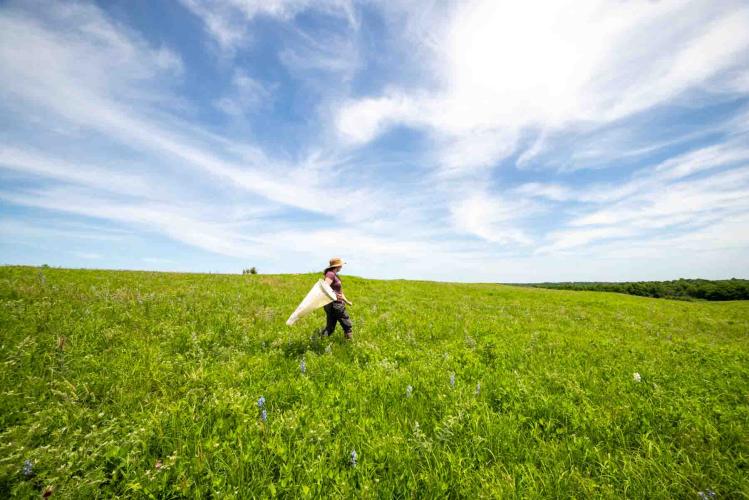

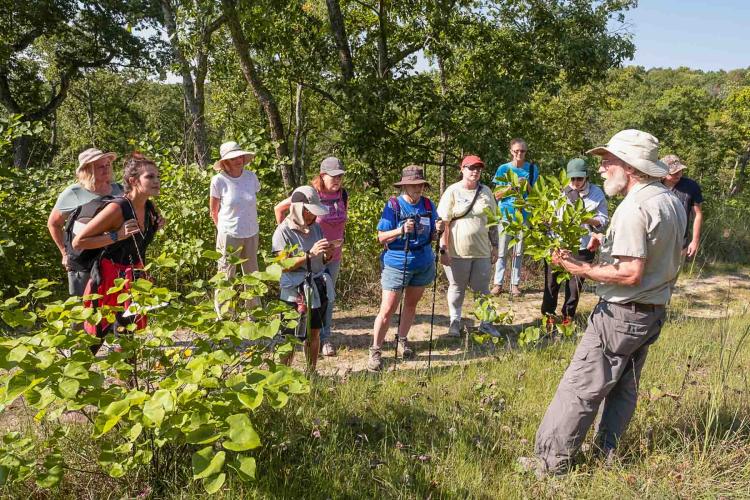
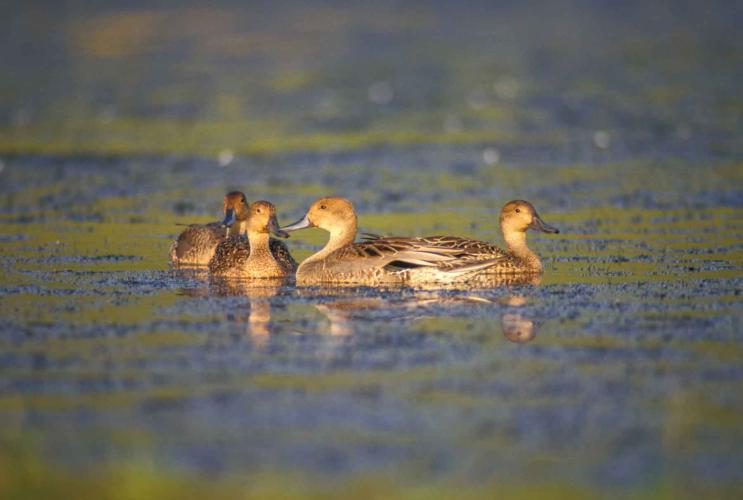
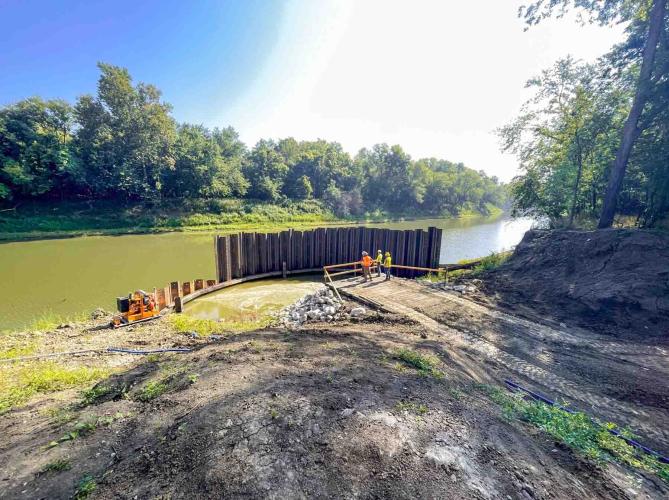
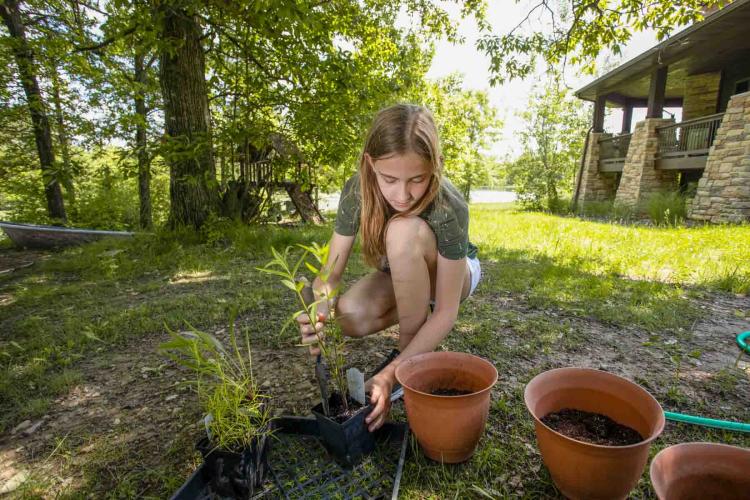
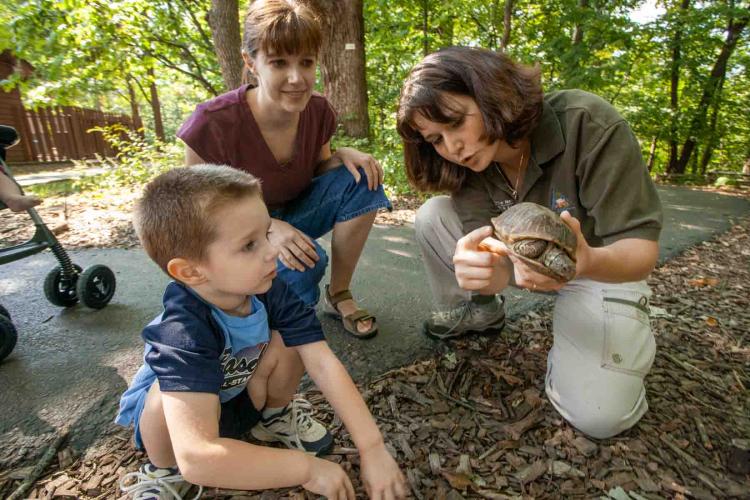
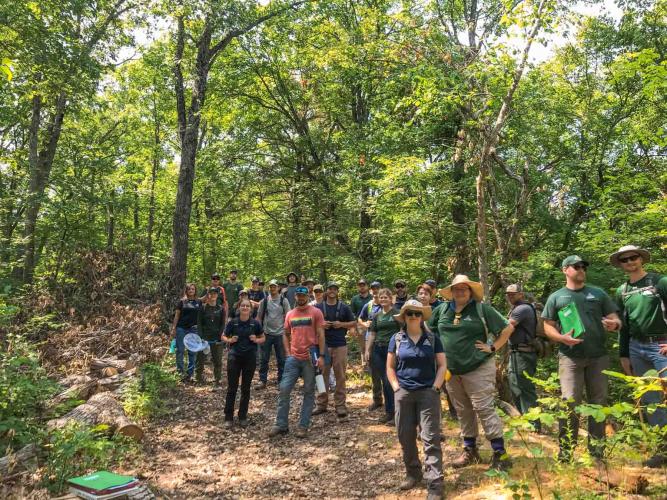

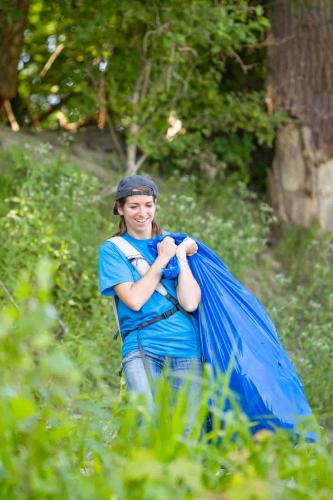
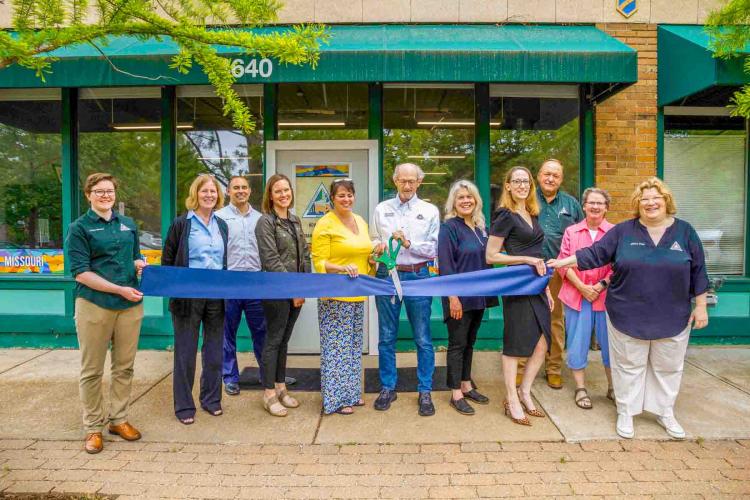

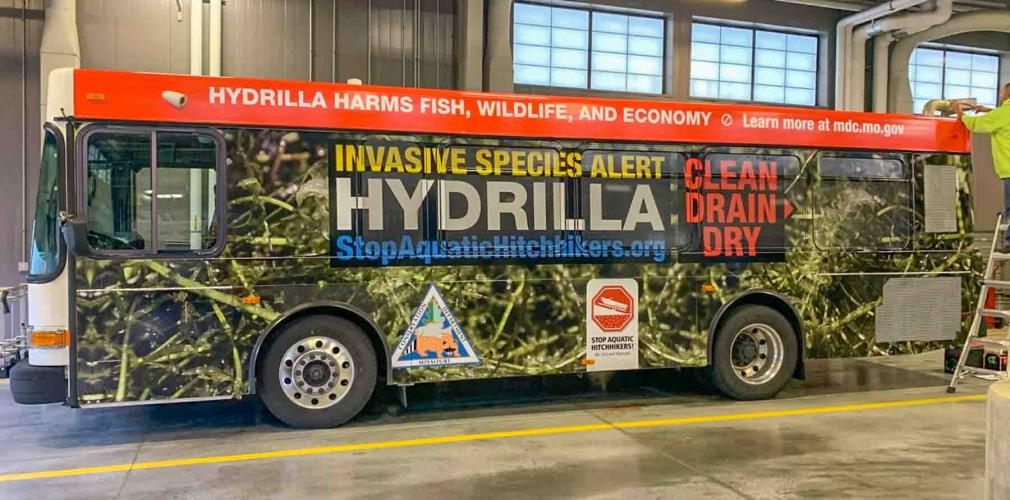
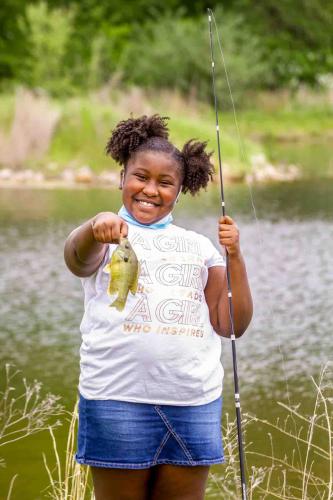
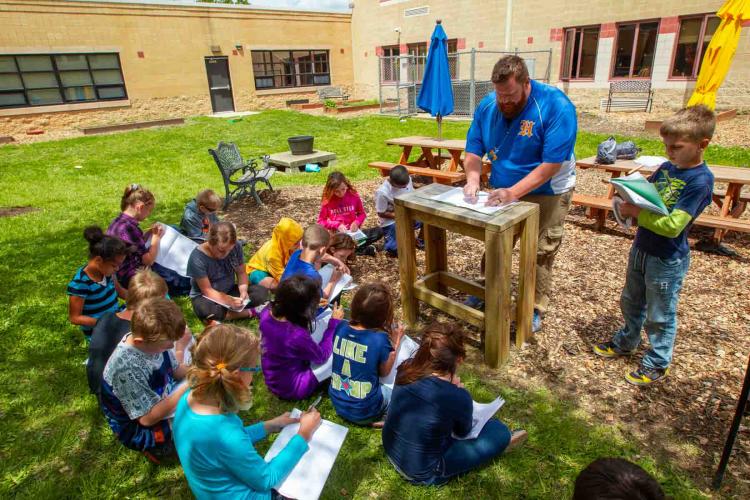
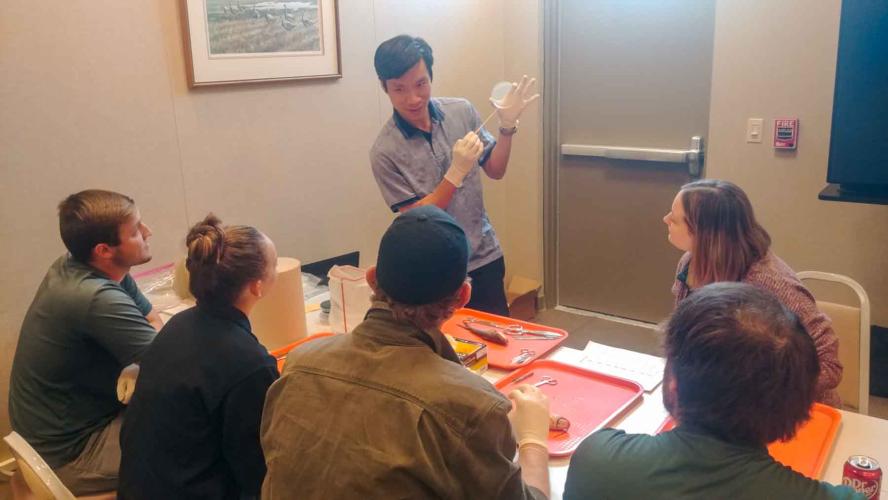
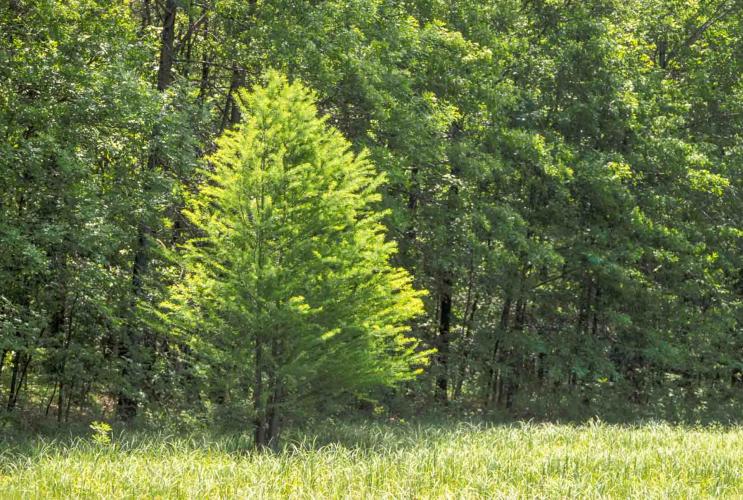
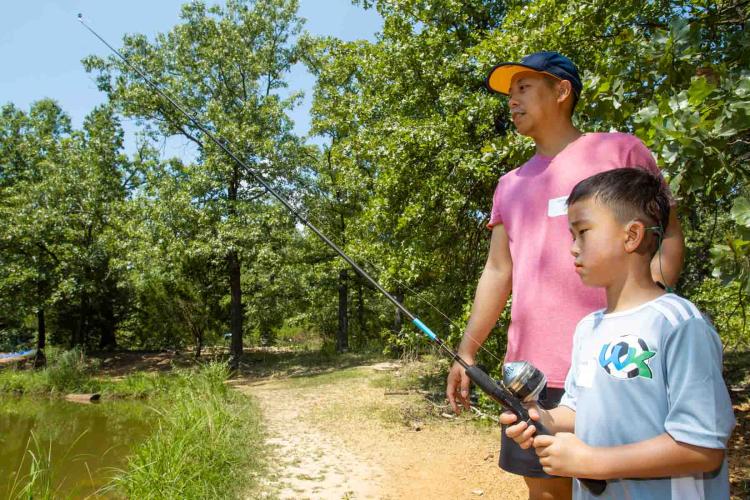
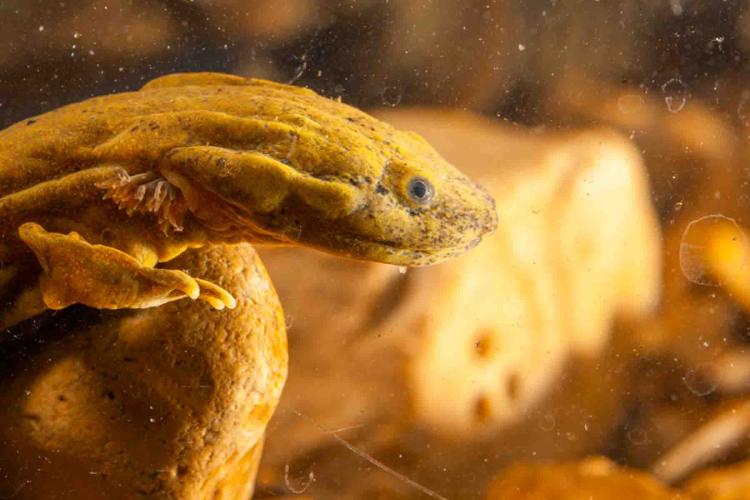
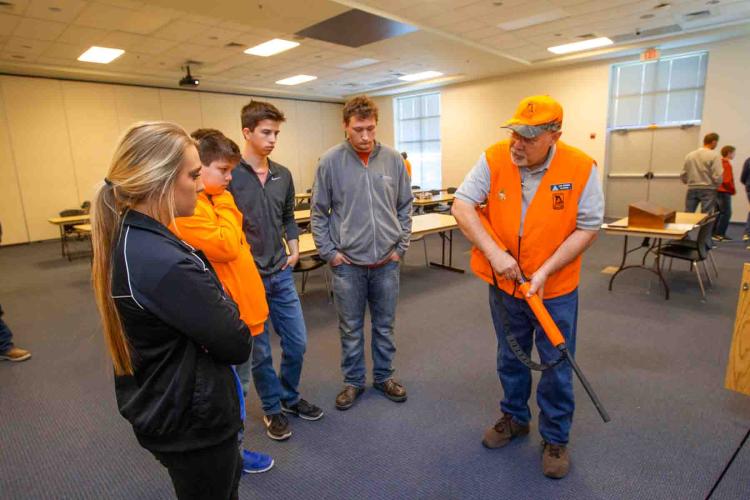

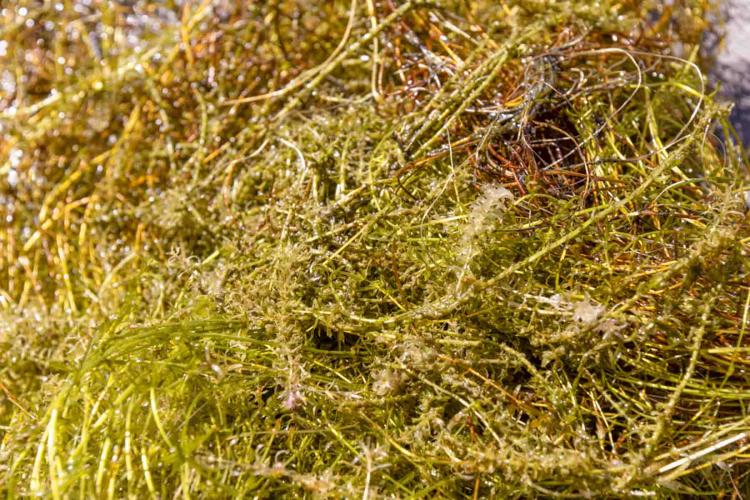
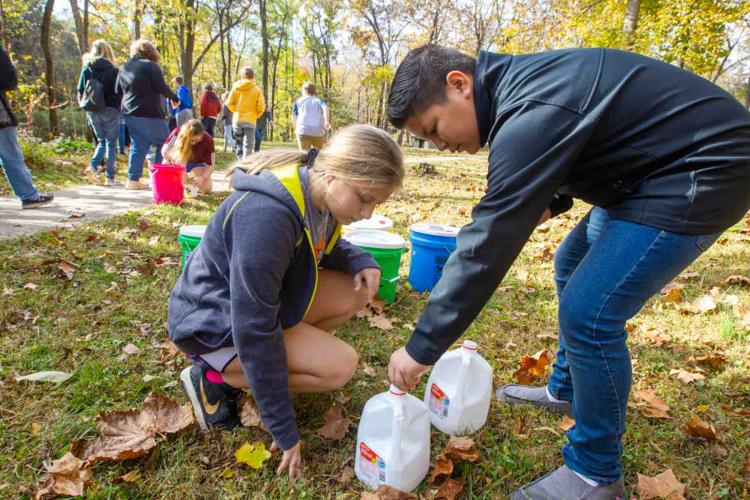
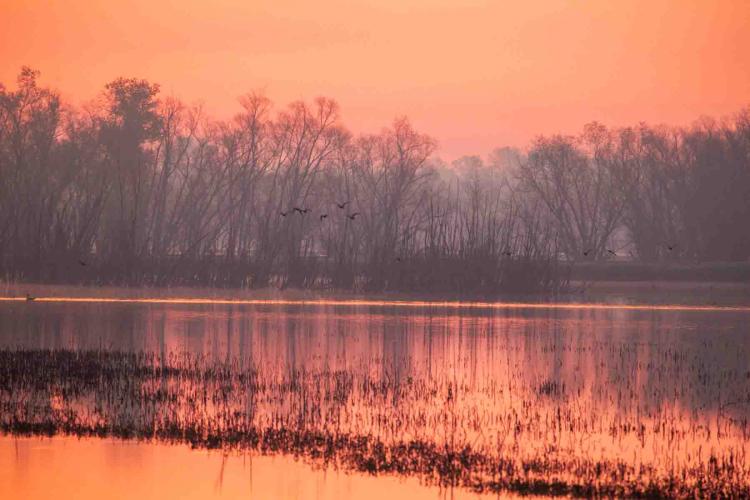
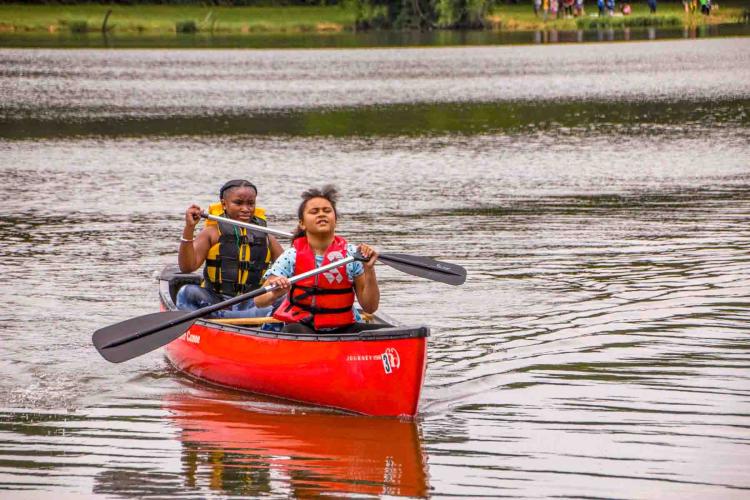
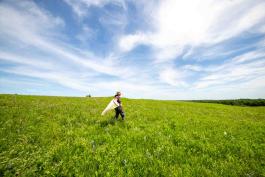

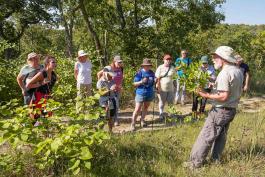

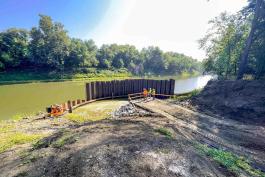
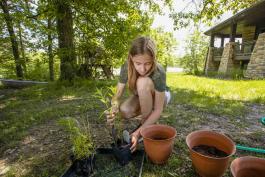
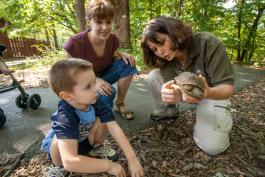
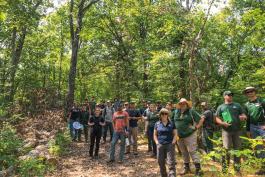


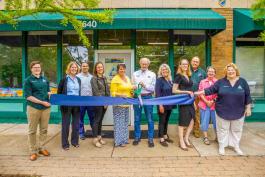

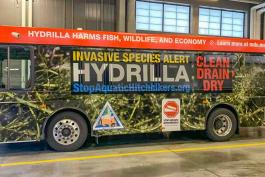


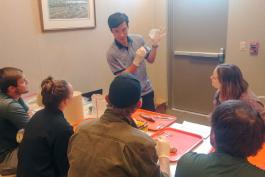
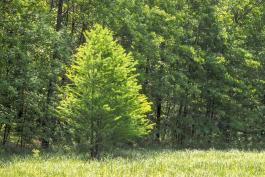
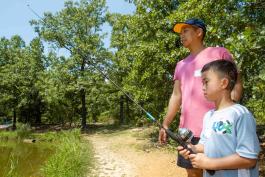
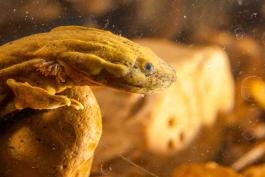
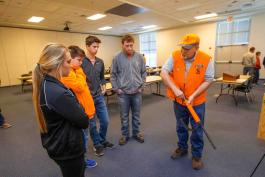
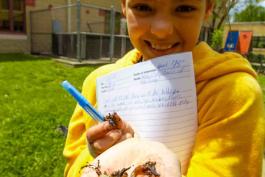
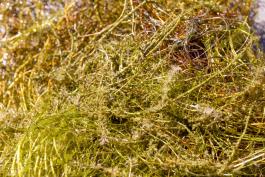
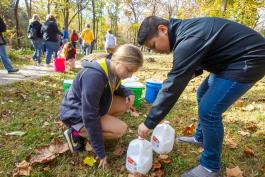
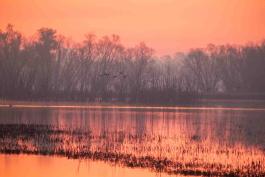
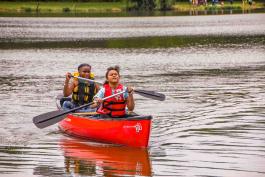
Also In This Issue
And More...
This Issue's Staff
Editor - Angie Daly Morfeld
Associate Editor - Larry Archer
Photography Editor - Cliff White
Staff Writer - Kristie Hilgedick
Staff Writer - Joe Jerek
Staff Writer – Dianne Van Dien
Designer - Shawn Carey
Designer - Marci Porter
Photographer - Noppadol Paothong
Photographer - David Stonner
Circulation – Marcia Hale






















